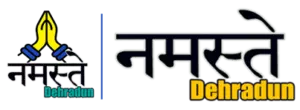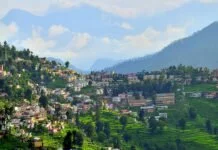Present day Garhwal is occupied by individuals from numerous ethnic back grounds. They can be separated into the accompanying gatherings or ranks:
1. Rajputs
The Rajputs of Garhwal are accepted to be of Aryan cause. They came as rushes of pioneers either from the south or from the abutting tracts of Himachal Pradesh, where they had originate from the Hindu Kush through Kashmir. Later Rajput pioneers to Garhwal aIso originated from Rajasthan to escape from the intrusions of the Muslims/Mughals. These individuals battled and repressed the Kols or Koltas or Doms, who were living in Garhwal around then. At first, the Rajputs took to settled agribusiness as they had carried new abilities with them. Later on, they took to different callings. They additionally joined the armed forces of different lords of Garhwal in extensive numbers. At present, the Rajputs can be found in many callings horticulture, business and taxpayer driven organization. Numerous Garhwali Rajputs are in the Military of India, especially in the Armed force.
2. Brahmins
The Brahmins of Garhwal are basically thought to be the descen-dants of the clerics who relocated from the fields or the Brahmins who came to visit the religious spots in Garhwal. Truly, those Brahmins, as well, are settled in Garhwal, who came amid the relocation of the Rajputs or even later.
In other cases, the people still retained their surnames or named themselves after the place from where they had came. Some examples are:
Karnatak and Telang after Mysore (Karnataka), and Rawat and Joshi of Rajasthan and Maharashtra.
3. Tribals
The tribals of Garhwal live in the upper, e.g. northern tracts. Some are of mongoloid cause and have an itinerant or semi-traveling lifestyle. In any case, now-a-days, the greater part of these individuals have taken to a settled life and are occupied with creature cultivation, agribusiness, exchange and different occupations. Imperative tribes of Garhwal are recorded beneath:
Jaunsaris of Jaunsar-Bawar
Jadhs of Uttarkashi
Marchas of Chamoli (Mana and Niti valleys)
Van Gujars
4. The Bhotias
The Bhotias are representatives and conceived mountain climbers. The Bhotias of Uttarakhand case plummet from the Rajputs, who originated from Kumaon and Garhwal and settled in the higher valleys.The Bhotias are to be discovered up and down the Tibetan fringe from Nepal in the east to Uttarkashi in the west.
Bhotias are admirers of the crests of Nanda Devi, Pancha Chuli and so on and the individuals who are slanted towards Hinduism venerate Gabla ( the Climate God), Runiya and Suniya divine beings, shield their creatures from ailment, and Sidhuwa and Bidhuwa divine beings, who offer them some assistance with finding lost creatures.
5. Jadhs
The Jadhs are a tribal group possessing the icy dry tracts of Uttarkashi Region. There are two principle towns – Nelang and Jadhang — both arranged at a rise of around 3,400 m. The whole group used to move from these high height towns in the winter, a few families staying back at a settlement called Dunda, while whatever is left of them moved onto the woods around Rishik
This group has close social and financial ties with the general population living in the bordering tracts of Himachal Pradesh and different parts of Uttarkashi. Most Jadhs viewed themselves as to have a place with an unrivaled rank and the assignment of weaving was left to the Kols, why should considered be of a lower position. The Jadhs have run of the mill Mongoloid components and talk a Tibetan lingo. They additionally speak Garhwali and Pahari.
6. Jaunsaries
Jaunsar – Bawar shapes the northern portion of Dehradun Locale and the general population living there are known as the Jaunsaries. They are presumably of extremely unadulterated Aryan stock. This zone had joins with the old social waves, which cleared over the northern piece of India, especially amid the Vedic, Mahayan, Kushan and Gupta times of old Indian histor
The general population take after a significant number of the old traditions even today, particular from their countrymen somewhere else in Garhwal, Kumaon and Himachal Pradesh. Indeed, even the craftsmanship and structural planning has its exceptional components, with significant utilization of woodwork. The most vital celebration of the Jaunsaries is the Magh Mela. Amid celebrations, they wear the Thalka or Lohiya, which is a long coat.
Thangel folds like tight-fitting trousers. Digwa or the top is the customary Jaunsari hood made of woolen material. Ladies wear the Ghagra, Kurti and Dhoti and are partial to trimmings.
The Jaunsarie still practice polyandry, which are said to be the conse-quence of their having had a nearby relationship with the incredible Pandava siblings of the Mahabharata, who had a typical wife, Draupadi.
7. The Van Gujars
This is a tribe of itinerant Muslims, why should accepted have come to Garhwal as the endowment of a princess of Sirmaur. This tribe reaches out along the Himalaya from Kashmir, Himachal Pradesh to Garhwal. They hold a considerable lot of the social practices of the time before they were changed over to Islam. They are absolutely veggie lover, living essentially on milk based items to supplement their utilization of oats. They rehearse transhumance, moving in the late spring to the high mountain glades, with their crowds of bison and dairy animals, and pulling back to the timberlands of the low lying tracks in the winters. A great part of the milk supply of the slopes amid the journey season is given by them. They are surely understood for their charge over backwoods legend.
All tribal communities have tremendous knowledge of traditional medicine systems and herbs.










